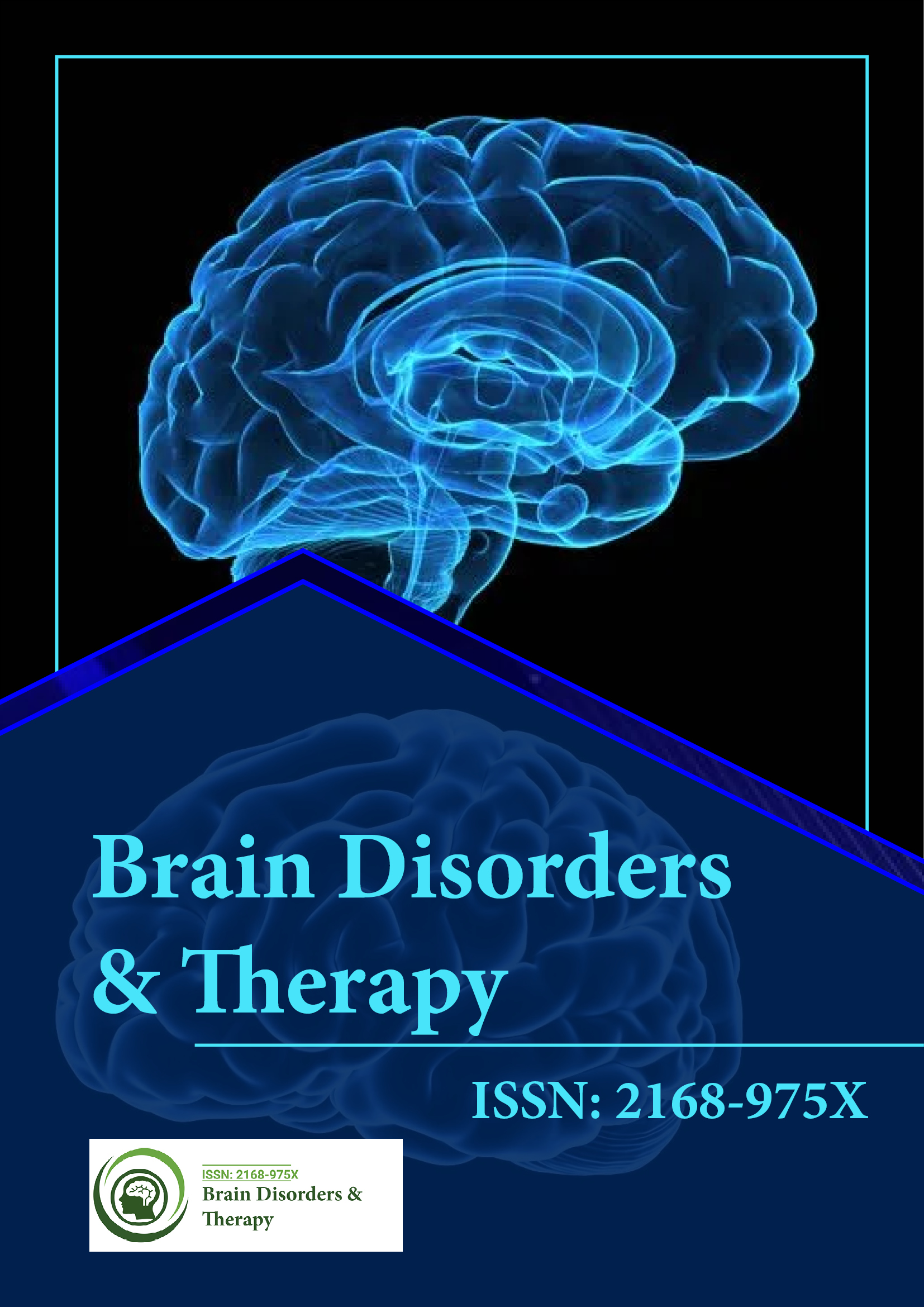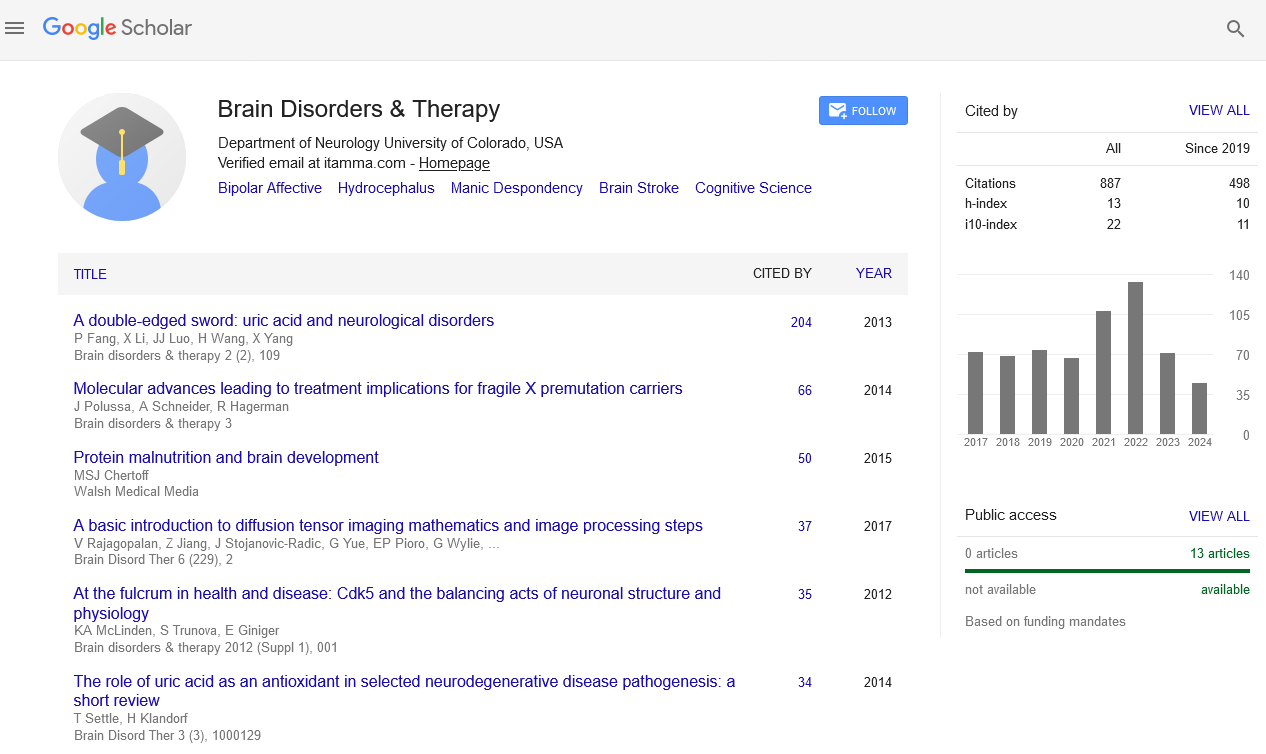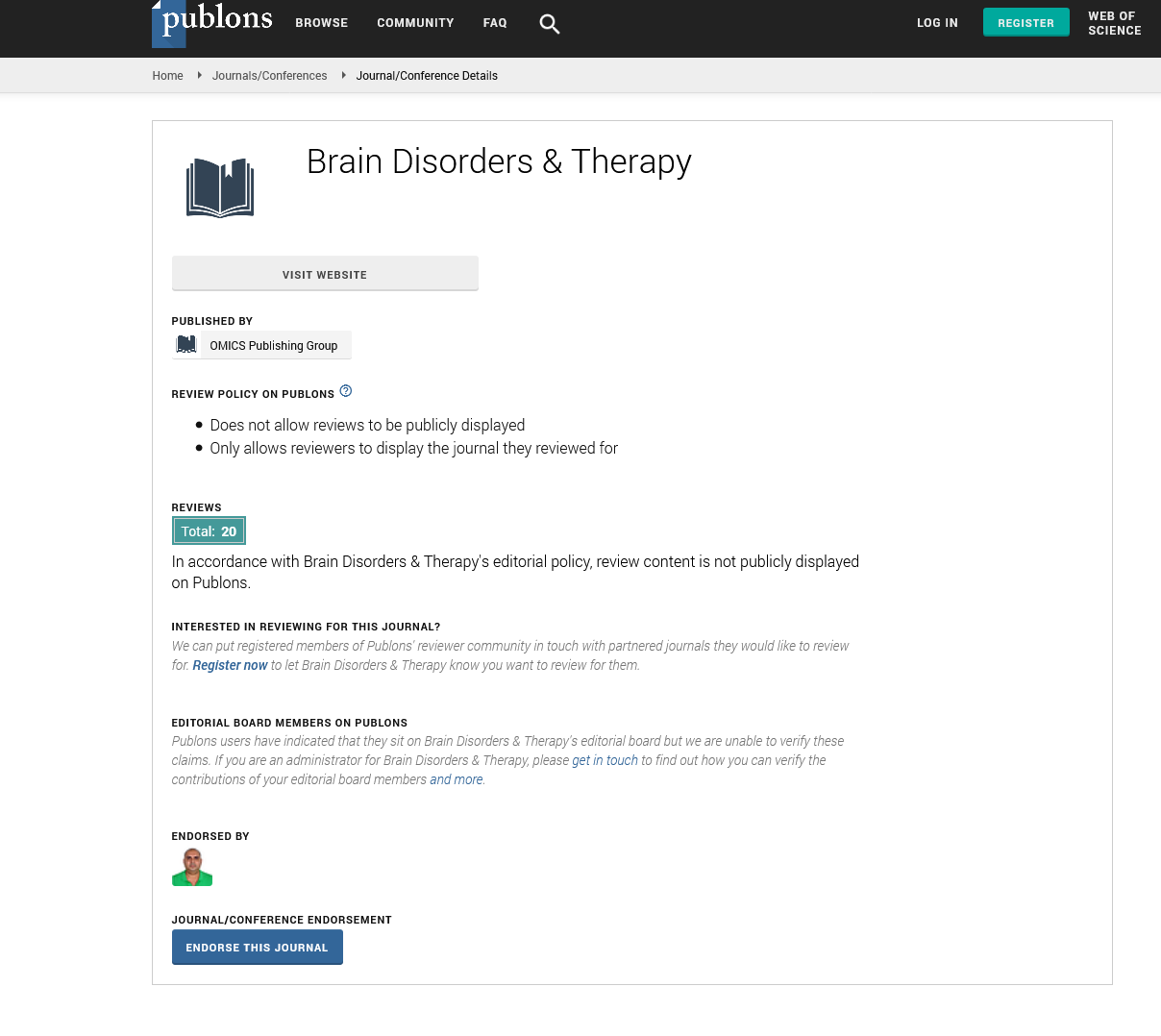Indexed In
- Open J Gate
- Genamics JournalSeek
- JournalTOCs
- RefSeek
- Hamdard University
- EBSCO A-Z
- OCLC- WorldCat
- Publons
- Geneva Foundation for Medical Education and Research
Useful Links
Share This Page
Journal Flyer

Open Access Journals
- Agri and Aquaculture
- Biochemistry
- Bioinformatics & Systems Biology
- Business & Management
- Chemistry
- Clinical Sciences
- Engineering
- Food & Nutrition
- General Science
- Genetics & Molecular Biology
- Immunology & Microbiology
- Medical Sciences
- Neuroscience & Psychology
- Nursing & Health Care
- Pharmaceutical Sciences
Commentary - (2025) Volume 14, Issue 2
Advances in Drug Therapy for Persistent Epileptic Seizures in Children
Simone Riggins*, Manuscript No. BDT-25-29720 ; , Pre QC No. BDT-25-29720 (PQ); , QC No. BDT-25-29720 ; , Manuscript No. BDT-25-29720 (R); , DOI: 10.35248/2168-975X.25.14.300
Description
Epilepsy is one of the most common neurological disorders in children, affecting approximately 1% of the global pediatric population. While many children achieve adequate seizure control with first-line Antiseizure Medications (ASMs), a significant proportion continue to experience seizures despite treatment. When two or more appropriately selected and well-tolerated drugs fail to achieve seizure freedom, the condition is defined as Drug-Resistant Epilepsy (DRE). This form of epilepsy is particularly concerning in children because of its impact on neurodevelopment, cognition, behavior and long-term quality of life. The heterogeneity of underlying causes—including genetic, metabolic, structural and inflammatory factors—adds complexity to its management. Pharmacotherapy remains the cornerstone of treatment, even though non-pharmacological approaches such as surgery and dietary interventions may be considered in select cases. Optimizing medication strategies, therefore, remains a central challenge in pediatric neurology.
Definition and clinical syndromes
The International League Against Epilepsy (ILAE) defines drug-resistant epilepsy as the failure of adequate trials of two well-chosen ASMs to achieve sustained seizure control. Within the pediatric population, several epilepsy syndromes are strongly associated with drug resistance, including Lennox-Gastaut syndrome, Dravet syndrome, West syndrome, tuberous sclerosis complex-associated epilepsy and Rasmussen encephalitis. These syndromes are clinically diverse, with differences in seizure type, electroencephalographic findings, comorbidities and prognosis. Understanding these classifications is critical, as they often guide therapeutic decisions and the use of specific pharmacological agents.
Conventional pharmacologic approaches
The first step in treatment typically involves monotherapy with established ASMs such as valproate, carbamazepine, levetiracetam, or oxcarbazepine. Monotherapy offers benefits in terms of fewer adverse effects, better adherence and lower risk of drug-drug interactions. However, in cases where seizure control is not achieved, clinicians usually transition to polytherapy. Combination regimens are selected based on complementary mechanisms of action, aiming to improve efficacy while minimizing toxicity. Despite this rational approach, many children with DRE continue to experience uncontrolled seizures, emphasizing the need for newer treatment options.
Adjuvant pharmacologic strategies
Beyond conventional ASMs, certain adjuvant pharmacologic therapies are used in specific contexts. Corticosteroids and Adrenocorticotropic Hormone (ACTH) remain important in the treatment of infantile spasms, with mechanisms thought to involve both anti-inflammatory and neuromodulatory effects. Immunotherapies such as intravenous immunoglobulin or rituximab are occasionally considered when autoimmune mechanisms are suspected, though evidence in pediatric populations remains limited. Ketogenic diet and modified dietary therapies, though not drugs in themselves, often act synergistically with pharmacologic treatments, especially in syndromes like Lennox-Gastaut. These adjunctive approaches highlight the multifaceted nature of epilepsy management in children.
Drug selection considerations in children
Pharmacotherapy in children requires unique considerations compared to adults. Pharmacokinetics differ significantly due to faster metabolism, influencing drug half-life and dosing frequency. The neurodevelopmental impact of long-term ASM use must be considered, as some drugs may affect cognition, memory and behavior. Practical aspects, such as the availability of liquid or chewable formulations, are also crucial for younger patients. Adherence remains a central concern, with simplified regimens often proving more effective. Side effect profiles must be carefully monitored, with vigilance for sedation, aggression, dermatologic reactions and metabolic changes. Ultimately, the goal is to select therapies that balance efficacy with developmental safety.
Precision and emerging approaches
Recent advances in genetics and molecular biology are driving precision medicine approaches in pediatric epilepsy. For example, sodium channelopathies may respond preferentially to sodium channel blockers, while mTOR pathway mutations in tuberous sclerosis complex have led to the use of targeted therapies such as everolimus. Gene-based therapies and antisense oligonucleotides are currently under investigation, offering future potential for highly individualized treatment. These developments represent a paradigm shift in managing pediatric DRE, moving from generalized symptomatic control toward mechanism-specific interventions.
Drug-resistant epilepsy in children remains a significant clinical and public health challenge. While conventional ASMs continue to form the foundation of therapy, the introduction of newer agents, rational polytherapy and precision-based approaches has expanded available options. Adjuvant therapies such as corticosteroids, ketogenic diets and immunomodulators provide additional support in select cases. The unique pharmacokinetic and developmental considerations of children demand individualized care, with careful balancing of seizure control against long-term safety. As research continues to advance, a more tailored, mechanism-driven approach holds promise for improving outcomes, reducing seizure burden and enhancing quality of life in this vulnerable population.
Citation: Riggins S (2025). Advances in Drug Therapy for Persistent Epileptic Seizures in Children. Brain Disord Ther. 14:300.
Copyright: © 2025 Riggins S. This is an open-access article distributed under the terms of the Creative Commons Attribution License, which permits unrestricted use, distribution, and reproduction in any medium, provided the original author and source are credited.


